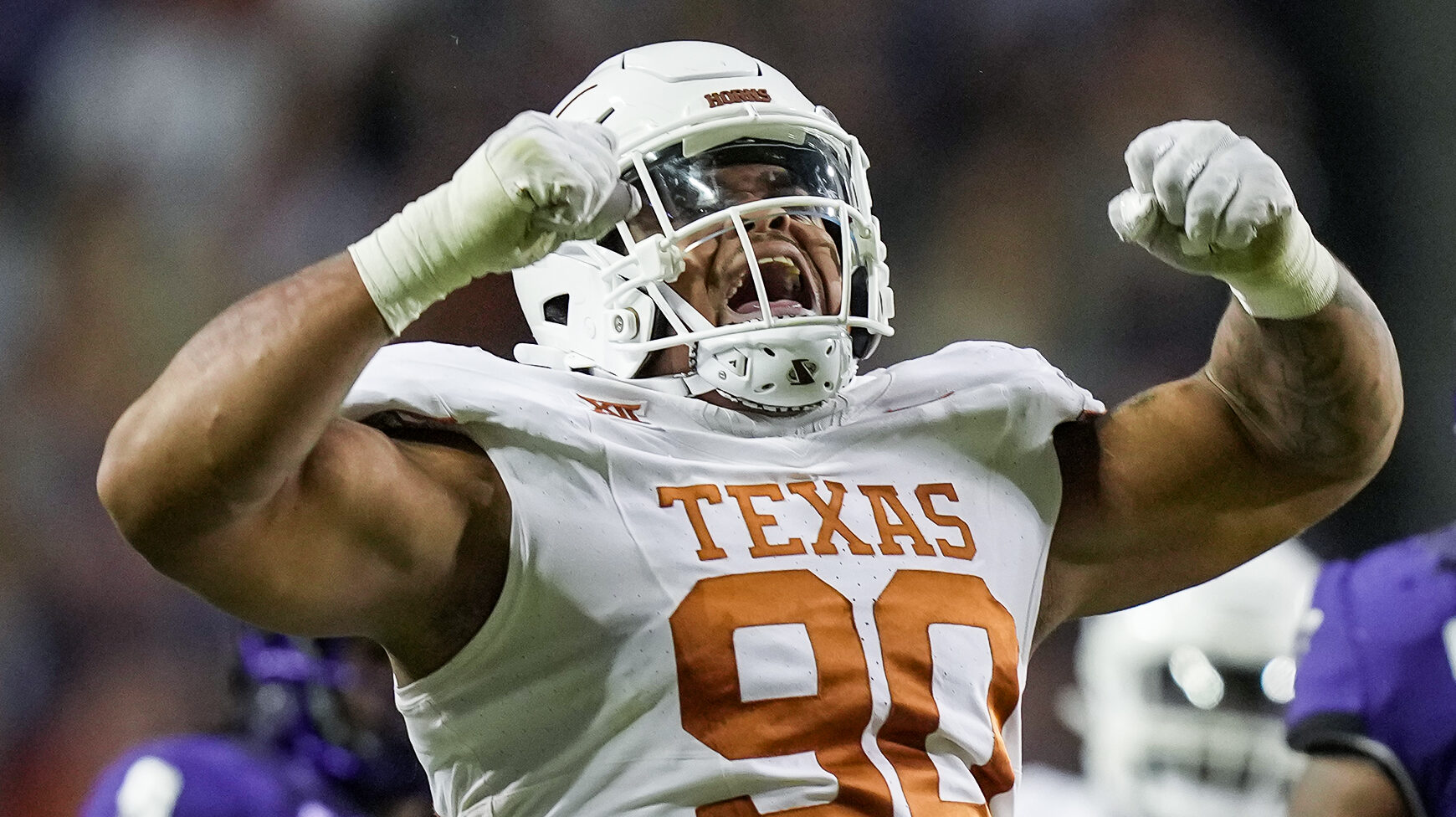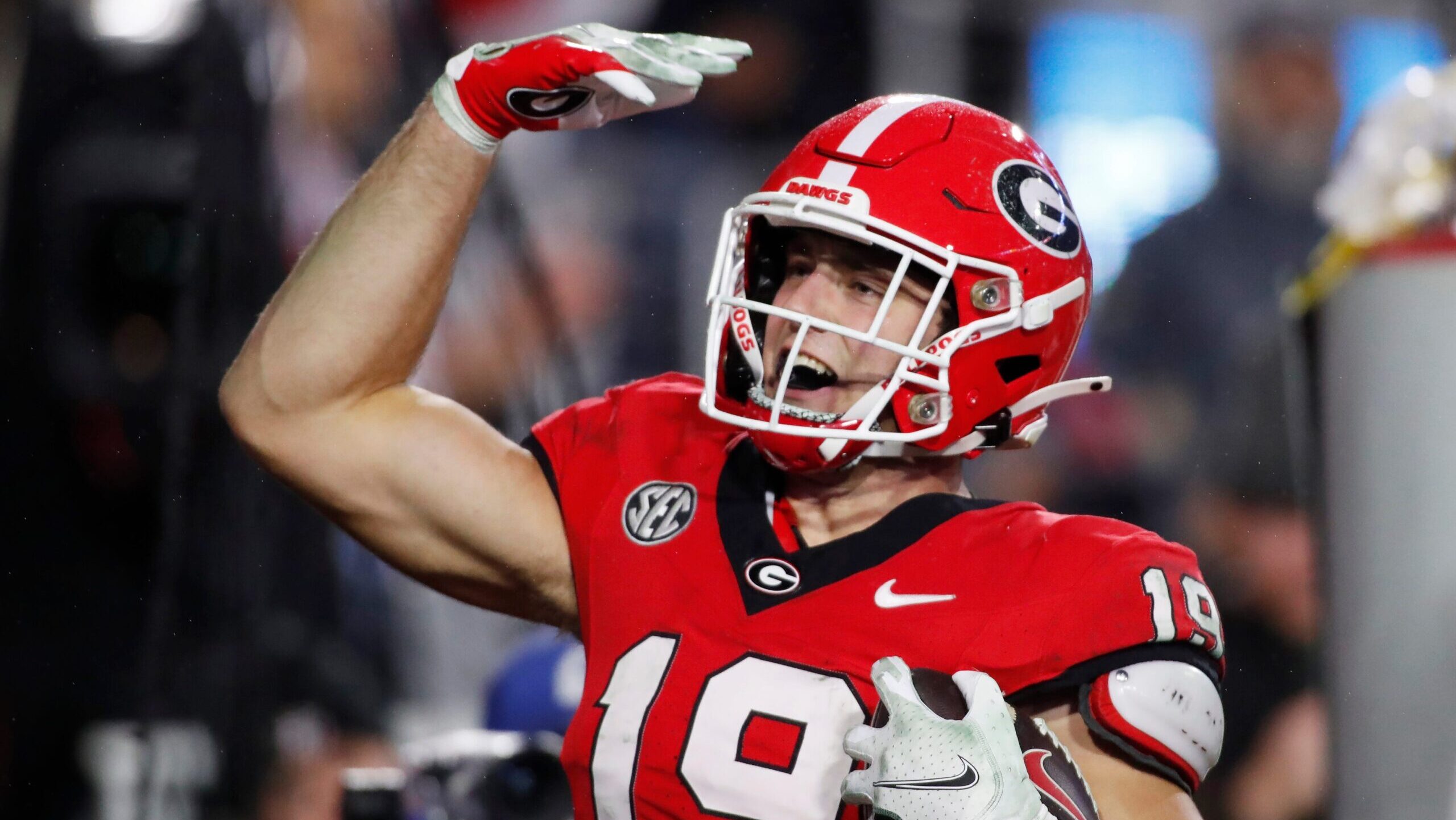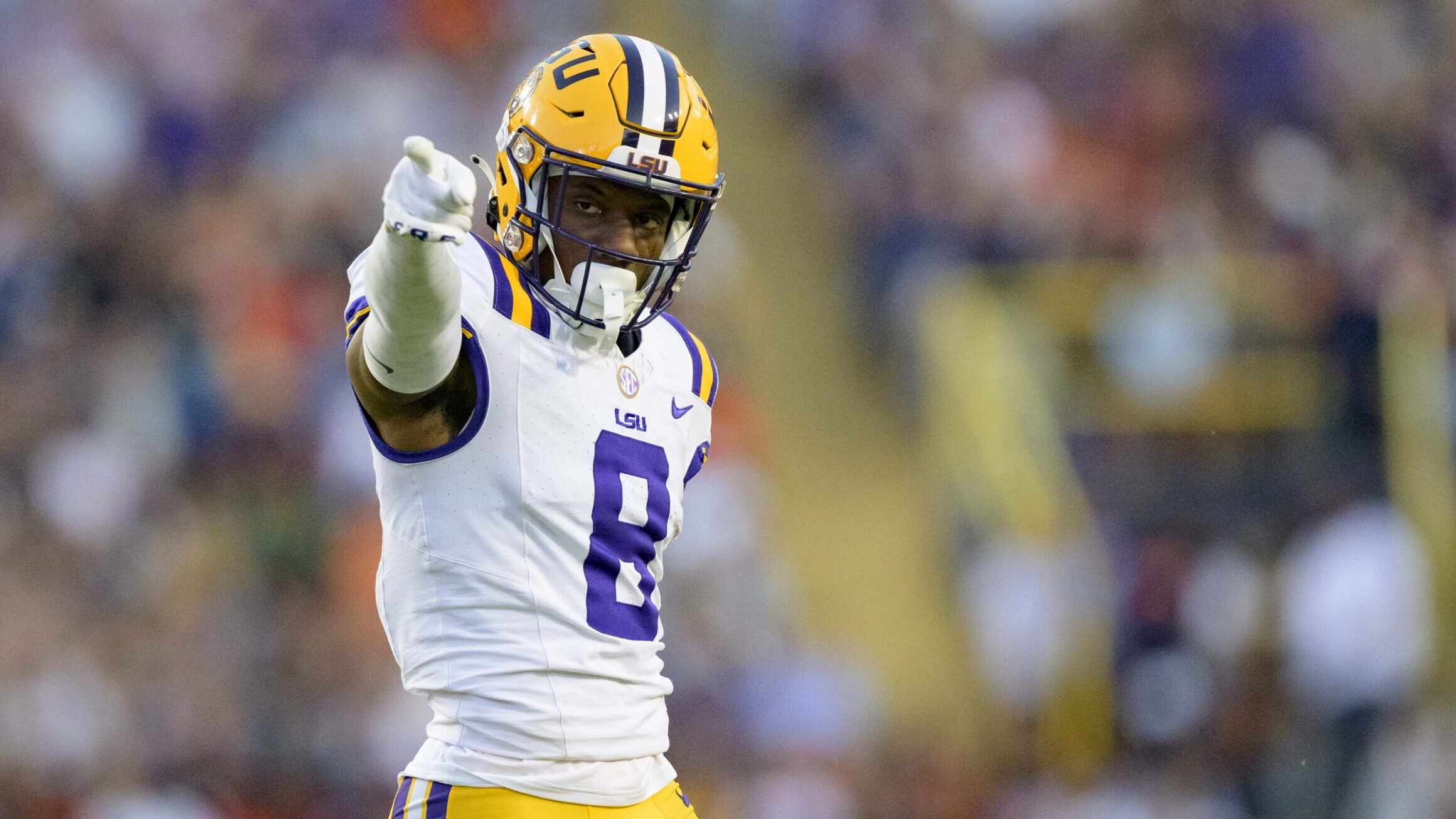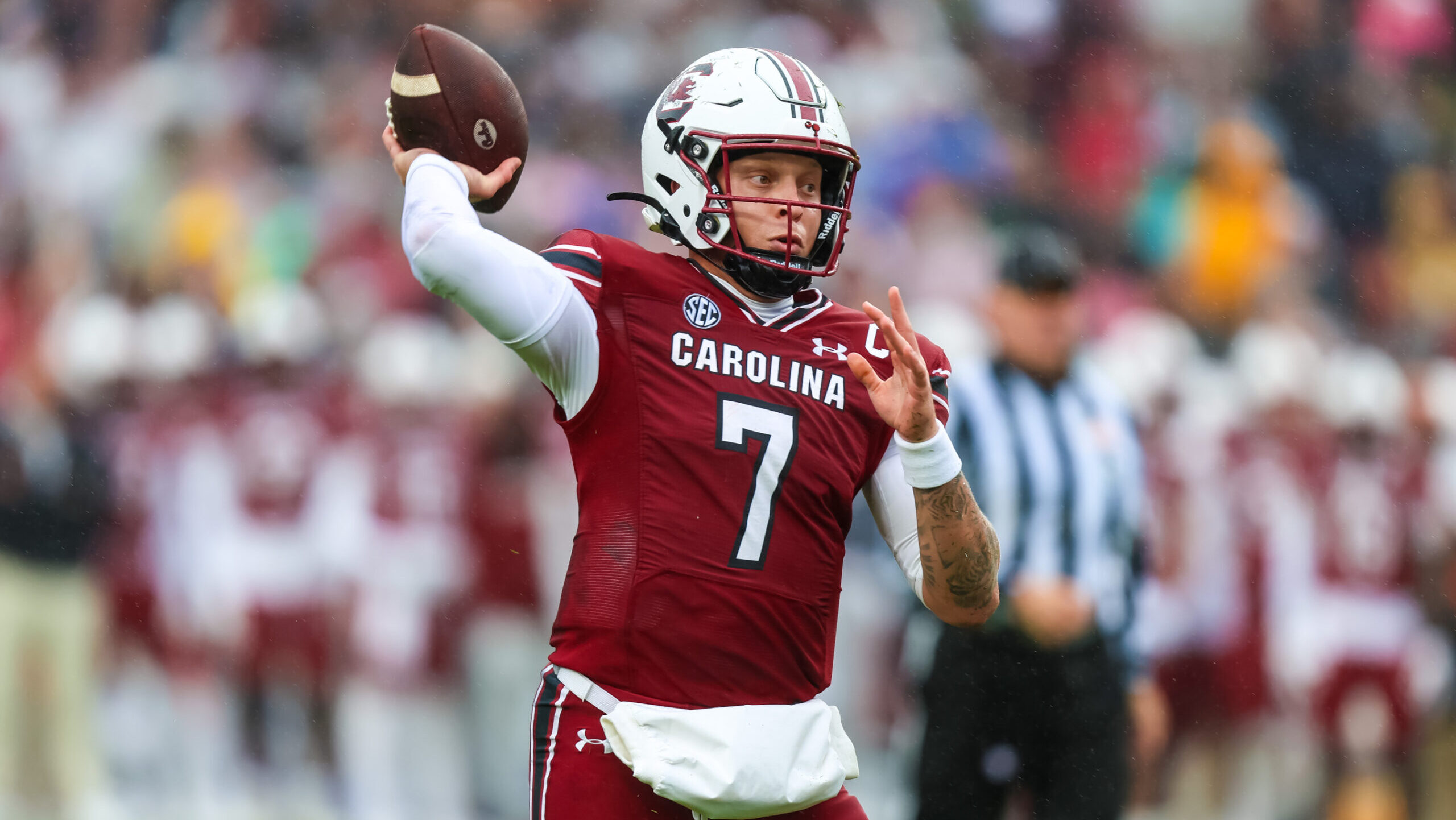Analysis
7/4/22
11 min read
How Often Do Running Backs Bounce Back from Down Years?
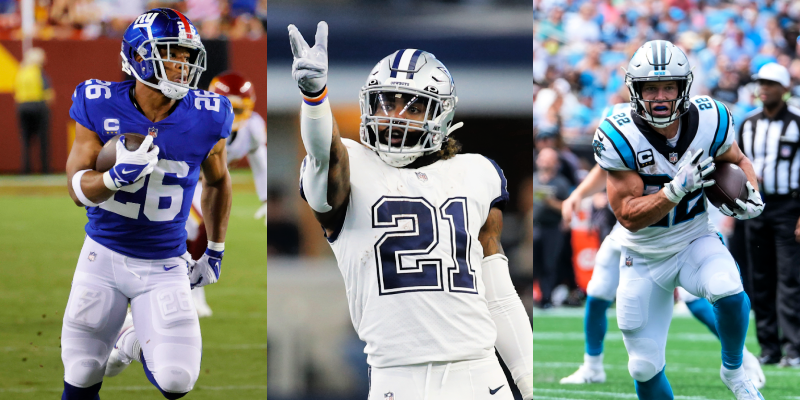
Ezekiel Elliott, Saquon Barkley, and Christian McCaffrey were all highly touted phenoms coming out of college and they didn’t disappoint early in their careers. Each of these high draft picks made a Pro Bowl and led the league in at least one major statistical category by the age of 23. It was impossible not to envision a future of All Pro selections, Pro Bowls, viral highlights, and playoff success.
Fast forward to today, and we are left wondering if these three players will ever come close to the production they had when they took the league by storm in their early 20s. But OTA off-season workouts and minicamp are a time for optimism, and it’s common for players to report in the “best shape of their lives” before the pads are on and the brutality of the game takes its toll.
Here is what we are hearing about these three players:
Ezekiel Elliott is in “top shape” coming into the 2022 season. According to Dallas head coach Mike McCarthy, Elliott is completely healthy, and his workouts have been impressive. Coming off a few underwhelming seasons, expectations on Elliott’s outlook are high in Dallas.
Saquon Barkley is finally trusting his knee again, and feels a lot better than he did at this point last year. Like Elliott, Barkley is primed for the 2022 season with high hopes in getting back to his dominant form after three injury-riddled seasons.
The Panthers will be cautious with Christian McCaffrey by holding him out of pre-season games this year. But McCaffrey is doing his part and willing to follow the guidance of HOFer Marshall Faulk as he learns to adapt his conditioning and running style to extend his career and stay on the field.
Elliott (age 27 this season) was a First-Team All-Pro and Rookie of the Year in 2016 while leading the NFL in carries and yards (322 for 1,631 and 15 rushing TDs). He again led the NFL in carries and rushing yards in 2018 with 304 carries and 1,434 yards, then followed that up with another strong season running for 1,357 yards and twelve rushing touchdowns in 2019. All-in-all from 2016 to 2019 Elliott made three Pro Bowls and ran for more yards than any other running back—the gap between Elliott and the RB with the second most yards was over 1,000 yards.
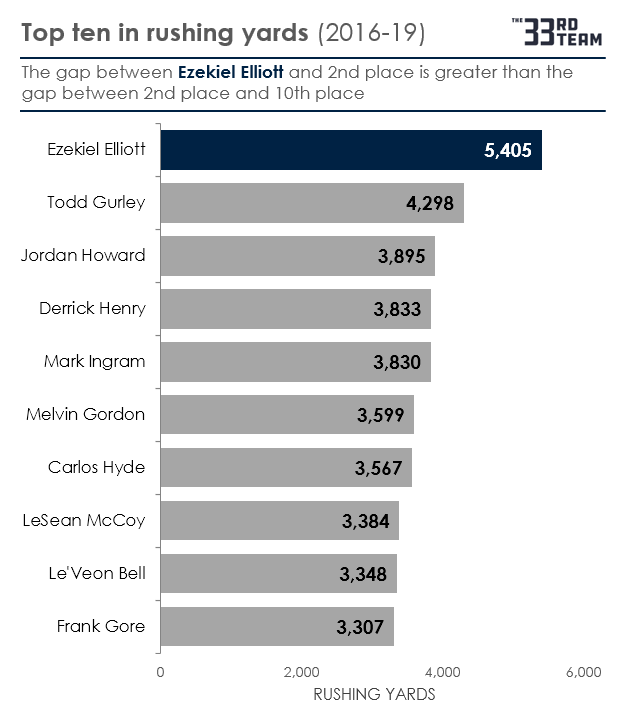
How Has Each Player Gotten to this Point?
The last two seasons have been relatively pedestrian for a player of Elliott’s status, hampered by a nagging injury (torn PCL in 2021) and a sputtering offense in 2020 due to franchise quarterback Dak Prescott missing most of the season (compound fracture of his ankle). In 2020 Elliott ran for only 979 yards, and barely cracked 1,000 in 2021. Although he was still fifth in the NFL in rushing yards over the last two seasons, per Pro Football Reference, his Yards After Contact declined two years in a row and he is breaking tackles at a much lower rate (3.8% last season compared to 8.0% in 2019)
Barkley, who is still relatively young at 25, is just a few seasons removed from his explosive rookie season in 2018 when he led the NFL in yards from scrimmage, was the AP Offensive Rookie of the Year, and a Pro Bowler. The expectations were extremely high considering that no other running back was selected in the draft higher than Barkley since Ki-jana Carter went number one overall in 1995. Barkley with his tree-trunk thighs and highlight reel runs, joined Eric Dickerson and Edgerrin James as one of only three players in NFL history to gain 2,000 yards from scrimmage as a rookie. He had six runs of 50-plus yards. Barkley alone made up 15% of all the 50-plus yard runs in the NFL that season. The vocal Dave Gettleman detractors who didn’t agree that a running back should be selected second overall began to quiet.
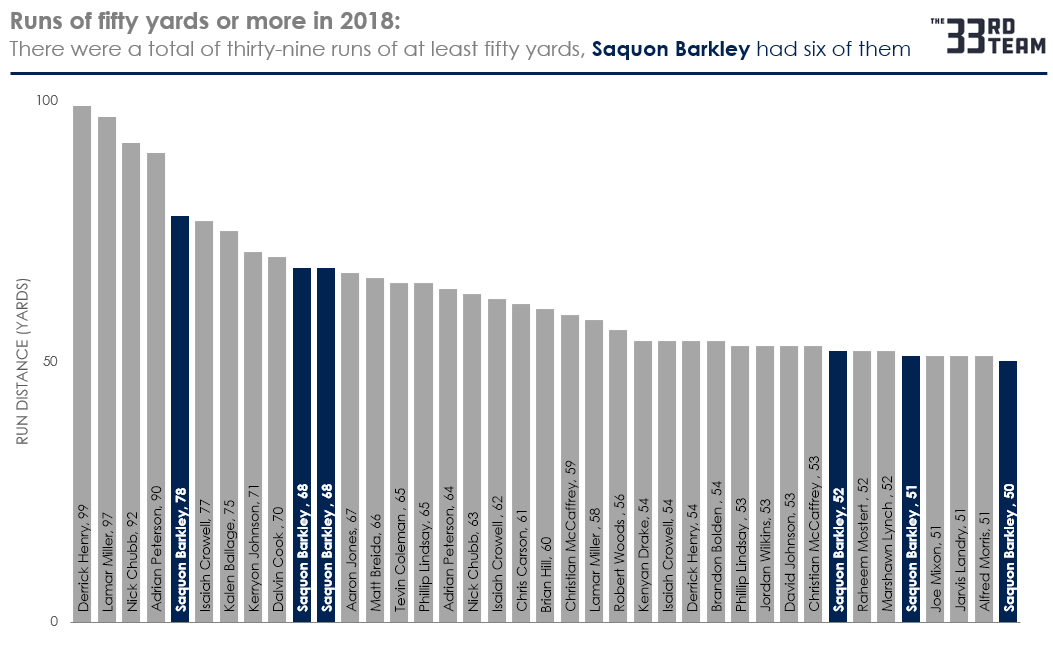
But what followed was season after season of injuries and disappointment. He missed games in 2019 due to a sprained ankle, and then tore his ACL early in 2020 causing him to miss most of that season and part of 2021. Barkley is what Mike Giddings, Owner/President of Pro Scout Inc. would categorize as an F-Injury player (2-plus games missed in each of the last three seasons). In addition to missing games, Barkley’s efficiency dropped off. After averaging 5.0 yards per carry in his rookie season, he has averaged 4.1 since.
McCaffrey, a top ten draft pick in 2017, started his career sharing touches with veteran back Jonathan Stewart, but by his second year in the league he was in the top three in yards from scrimmage behind only Barkley and Elliott. In his third season at the age of 23, he had a historic year becoming only the third player in history to have 1,000 yards rushing and 1,000 yards receiving in the same season. He was a first team All-Pro; he led the NFL in touches (403), yards from scrimmage (2,392) and touchdowns (19). From 2018-2019 combined, he had the most yards from scrimmage in the NFL with 4,357, more than 500 yards separated McCaffrey from the player with the second most yards during those two years.
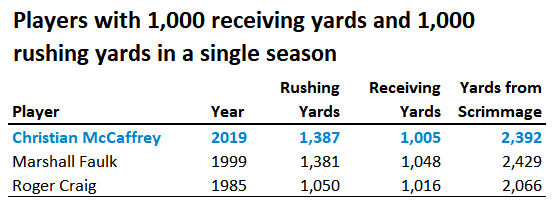
After 2019, McCaffrey fell apart…literally. Over the next two years, McCaffrey had five separate injuries and missed a total of twenty-three games. His production, when he was on the field, remained relatively high considering the team no longer had prime Cam Newton running the offense. But he just wasn’t on the field nearly enough to help the sputtering Panthers offense which ended up 24th and 29th in the league in points scored in 2020 and 2021.
This brings us to 2022, with all three players feeling healthy and fit, their teams optimistic, and the fans hoping to see their star running backs electrify the crowds like they did in their early years. The Cowboys, Panthers and Giants would be smart to limit the touches of their star running backs. The Giants have a viable backup in 5-year veteran Matt Breida. The Panthers have added D’Onta Foreman to help bolster their RB depth. The Cowboys have one of the best back-up running backs in the NFL in Tony Pollard who owns the top Pro Football Focus rushing grade (90.3) in the NFL last season. Pollard has also seen his touches increase by about 30% in each of the past two seasons.
These three backs are not yet at the age that history suggests they should hit a cliff and see a significant drop-off in production. At ages 25 (Barkley), 26 (McCaffrey) and 27 (Elliott) this season, it is conceivable that their 2022 production matches their team’s optimism. But what has history shown us? What does the data show us from other running backs who started off their careers on fire, then experienced a decline in production for a season or two in their prime?
What's Likely Coming Next From These Three Backs?
We looked at the careers of every running back since 1978 (the start of the 16-game era), who was selected to the Pro Bowl by age 25. The reason for the Pro Bowl and age criteria is to find running backs who were at or near the top of the league early in their careers like Elliott, McCaffrey, and Barkley have been. We then narrowed the list of these 103 backs to those who experienced 2-plus years of diminished performance by age 26 (Elliott’s age) to see what happened next.
Out of 103 running backs who were selected to a Pro Bowl by age 25 (107 including current players still in their prime), 35 experienced a noticeable decline of more than two years by age 26. We broke the group of 35 players into three categories. The categories were surprisingly evenly split:
- Players who bounced back to a high level of production 31.4% (Notable players in this group are Edgerrin James, Steven Jackson, and Jerome Bettis)
- Players who continued the trend of a gradual decline 34.3% (Notable players in this group are Natrone Means, Devonta Freeman, and Jordan Howard)
- Players who accelerated the downward trend had their careers end abruptly 34.3% (Notable players in this group are Jay Ajayi, Eddie Lacy, and Barry Foster)
Only one of these outcomes is favorable. Just 31% of running backs overcame their decline to return to a level of production that was close to their early peak. On average, the data above suggests that only one of these three players (Elliott, McCaffrey, and Barkley) will once again return to their top form and remain at that level for a few years. However, when we looked deeper into the data, we started to notice that the names that seemed to keep showing up in the “bounce back” group were players who were drafted high.
Even though all the players experienced similar relative drop-offs from their peak, we had a hunch that first round draft picks were more likely to bounce back at a higher rate. We peeled back this layer of the onion to explore what the data might suggest about draft status in relation to come-back rate. The caveat here is that sample sizes are getting small at this point, but our findings were eye opening.
We found that players who were drafted high had a much greater propensity to bounce back than players who were drafted outside of the first round. Running backs selected in the top ten like Elliott, Barkley, and McCaffrey, ended up bouncing back with production at or near their earlier peak 71% of the time. Although this group may not be statistically significant (seven total), it is reasonable to believe any or all three of these running backs can come close to their early dominance, like other top ten picks have done.
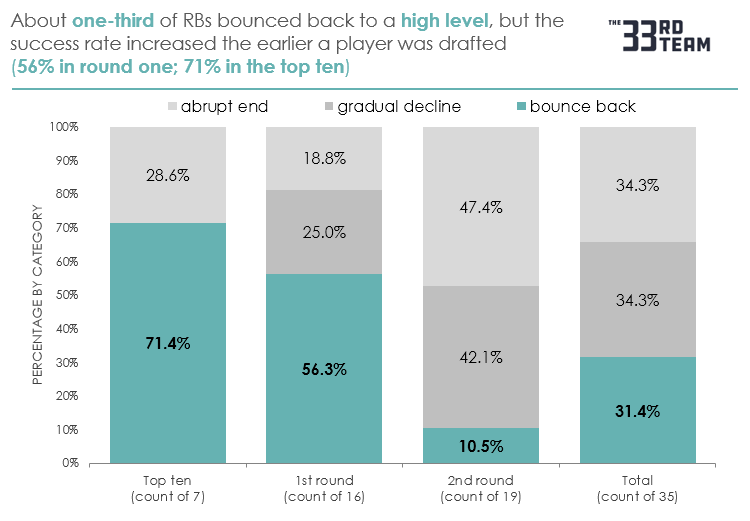
The hypothesis is that this is not random. Quite often a team is more likely to be patient with a player who they spent top 10 draft capital on. A front office and head coach may be more inclined to get that player touches and plenty of time to get back on track to get the most out of their investment. Conversely, with less draft capital and salary cap used on a player drafted in later rounds, a team is more likely to move on from a late-round player who has performed at a high level but has regressed, either because of injury or ability.
Why Might Draft Status Be a Factor Here?
Another reason that running backs selected outside of round one may be less likely to get back to their peak after sliding could be that their early success was simply an outlier; all the stars aligned for success. An example of this is Alfred Morris who ran for 1,613 yards and thirteen touchdowns as a rookie in 2012. More than his skill, the unique and innovative offense architected by OC Kyle Shanahan and run by the versatile rookie phenom Robert Griffin III in 2012 may have been a bigger reason that Morris ran for the second most yards in the NFL that season.
Elliott, Barkley, and McCaffrey are all top ten draft picks giving them the combination of talent and front office/coaching support that puts them in the category of the 71% that bounced back to a level close to their peak. Barkley tore his ACL at the same age that Edgerrin James did. James regressed for a couple of years, but the rest is history as he is now enshrined in the Pro Football Hall of Fame.
Elliott, the oldest of the group at 27, could cede more touches to Tony Pollard this season, but it is reasonable to think that he may become more efficient and return to a high level at the age of 27-plus as former No. 1 overall pick George Rogers did after some early career post-peak struggles. McCaffrey coming off two injury-riddled seasons is only 26 years old, the same age that Steven Jackson was after a couple of down years due to multiple injuries. What happened after that for Jackson was six solid years with two Pro Bowls, the fourth most touches in the NFL (1,749), and 7,795 yards from scrimmage.
Historical data and trends do not impact a current player’s situation. Elliott, Barkley, and McCaffrey don’t care what Greg Bell or Kevin Mack did in the 80s and 90s after a couple of years of regression. A player’s effort, their team’s decisions, modern medicine, and luck will combine to decide what happens next. But the data can help guide our expectations as fans, coaches, or front offices. History suggests that these three running backs all have a fair chance of bouncing back like Jamal Lewis did, than to fade like Todd Gurley did.


